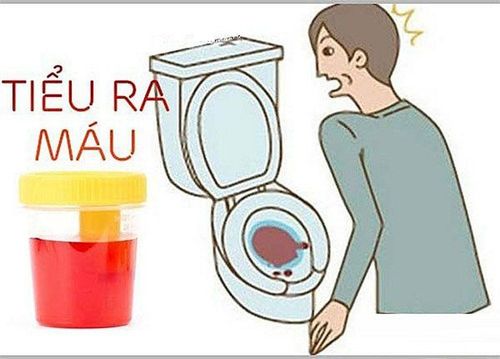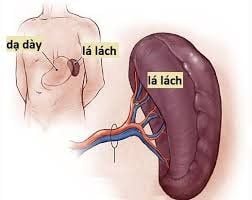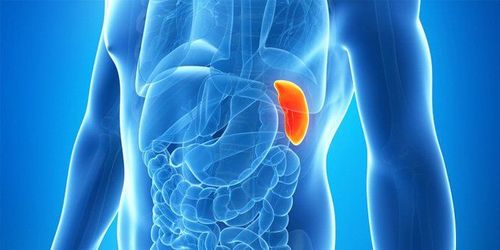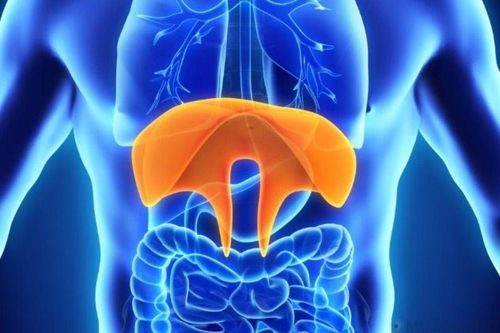This is an automatically translated article.
Closed abdominal trauma is also known as abdominal trauma. Symptoms of blunt abdominal trauma are usually localized pain in the injured area or pain throughout the abdomen, depending on the condition and nature of the injury.
1. Overview of blunt abdominal trauma
Closed abdominal trauma, also known as abdominal trauma, includes injuries to the abdomen where the patient's abdominal wall is not perforated. Most causes of blunt abdominal trauma are related to traffic accidents. In addition, some other causes include accidents in daily life, fights, or falling from high floors.
When blunt abdominal trauma, the highest rate of injury is the spleen, followed by the liver, small intestine, kidney, bladder, large intestine, diaphragm, and finally the pancreas.
Mechanism of closed abdominal injury
Sudden deceleration: often related to the cause of pulling ligaments, especially in places adjacent to the fixed position, causing different organs to move at different speeds . Crush: occurs when the viscera between the abdominal wall and the spine (or posterior chest) is compressed. This mechanism will cause damage to solid organs such as liver, kidney, spleen... Due to sudden increase in intra-abdominal pressure: it has a serious effect on hollow viscera, even causing hollow visceral rupture.
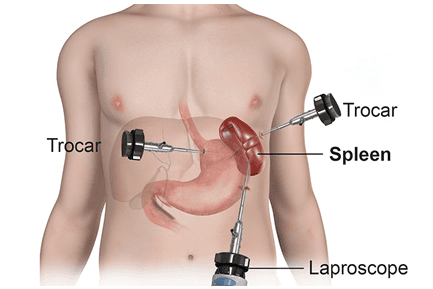
Chấn thương bụng kín gây ảnh hưởng trực tiếp đến lá lách
2. Classification of blunt abdominal trauma
Injury to the abdomen is usually divided into 2 main types:
Injury to the abdominal wall: injury to the outside but does not cause significant damage to the internal organs. These injuries produce pools of bruising and edema under the skin. Injury to the abdominal wall can be caused by rupture of the epigastric artery, rupture of the abdominal wall fascia, or skin dissection. Intra-abdominal visceral injury: usually includes lesions in one or more different organs in combination (solid and hollow). These lesions are difficult to accurately diagnose as well as make surgery difficult. Therefore, when performing surgery, surgeons need to explore very carefully as well as have special methods to avoid missing damaged organs.

Tổn thương thành bụng không gây ảnh hưởng đến các tạng trong ổ bụng
3. What are the symptoms of blunt abdominal trauma?
Most patients with abdominal trauma will have some common symptoms as follows.
3.1. Symptoms of blunt abdominal trauma after an accident
Patients will have some manifestations of blunt abdominal trauma such as:
Abdominal pain: this is the most common and obvious symptom, especially pain at the site of direct injury. Vomiting: Depending on the extent of damage, the patient may vomit or vomit blood. Urine: The patient may urinate with blood or clear urine depending on the condition.
3.2. Systemic symptoms of blunt abdominal trauma
Patients with blunt abdominal trauma will have different manifestations depending on the type of injury, including:
Hemorrhagic shock: occurs due to damage to solid organs or large blood vessels in the peritoneal cavity. Manifestations of this condition are acute bleeding syndrome with significant blood loss, early effects on the whole body: pale skin, panic, white mucous membranes, profuse sweating, cold bridge of nose and extremities interrupted, the patient was intensely thirsty. The injury site may have hematomas, muscle bruises, skin and muscle tears... The patient may have localized pain at the injury site or pain in the entire abdomen. When percussion in the liver area, there is an abnormal echo, and when percussion of the 2 pelvic fossa, a dull sound can be heard.
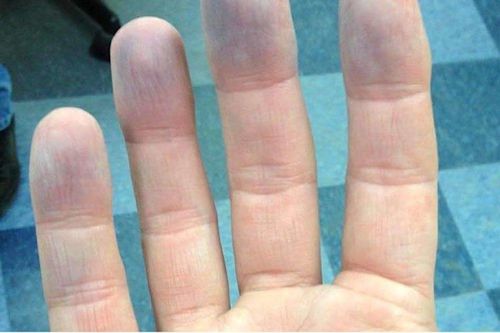
Da xanh tím báo hiệu tình trạng chấn thương bụng kín
4. Diagnosis of blunt abdominal trauma
Besides the clinical signs, the patient is also diagnosed with pelvic trauma based on some of the following tests.
4.1. Blood tests
Patient needs blood test to check:
Red blood cell count, hemoglobin and hematocrit. WBC and neutrophil counts. Blood group formula test
4.2. Stomach supersonic
Abdominal ultrasound is a relatively accurate test but can only be used in patients with suspected abdominal trauma but not in general shock. In case the patient is in shock, the doctor can only do local ultrasound to detect specific abdominal injuries, especially lesions in solid organs such as liver, spleen,...
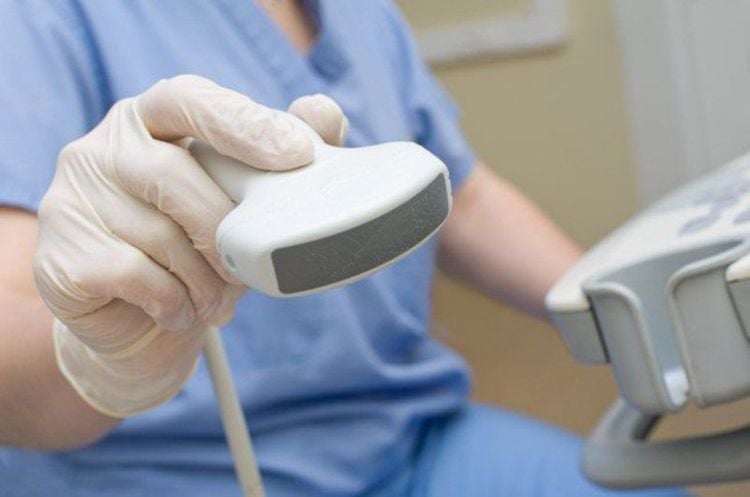
Một trong những phương pháp chẩn đoán chấn thương bụng kín là siêu âm ổ bụng
4.3. X-ray of the abdomen standing up
This technique has the purpose of finding free air and free fluid in the abdomen, determining the liver and spleen balls.
4.4. Computerized tomography
This is a highly valuable imaging tool in the diagnosis of lesions, especially those in solid organs.
5. Problems of surgical treatment of abdominal trauma
5.1. Indications for surgery
Closed abdominal trauma may be indicated for surgical treatment if:
The patient has ruptured solid viscera causing severe hemoperitoneum. Empty organ rupture. Conservative treatment of solid organ lesions was unsuccessful.
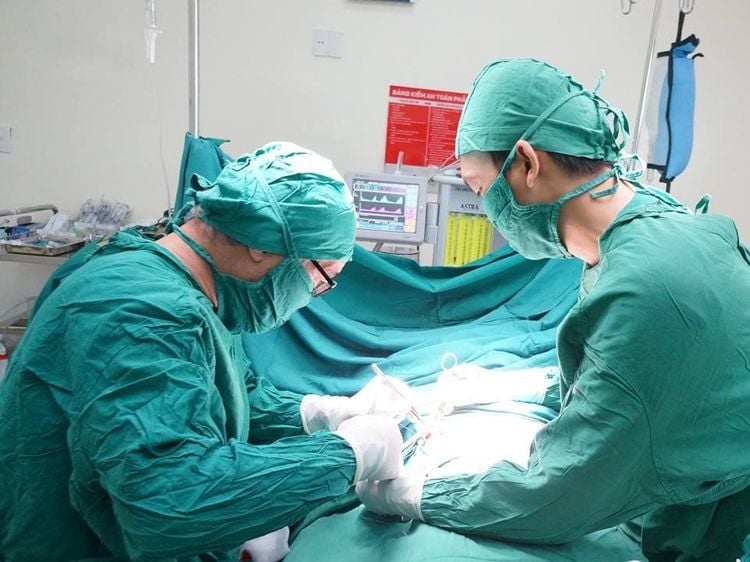
Bệnh nhân chấn thương bụng kín được chỉ định phẫu thuật khi vỡ tạng rỗng
5.2. Preoperative wound management
If the patient's abdomen has bright red blood, the surgeon needs to stop the bleeding temporarily, then take blood from the abdomen to retransfuse to the patient if the patient has no significant hollow or biliary tract lesions. tell.
Treatment of blunt abdominal trauma based on the type of injury
Liver damage: hemostasis and atypical liver resection. Injury to the spleen: total or partial splenectomy depending on the severity of the injury, then the splenic hemostasis is preserved. Pancreatic injury: resection of the pancreas in the renal or caudal region, then restored with the main pancreatic duct. Kidney damage: total or partial nephrectomy. Bladder: restoration combined with drainage. Hollow visceral injury: mainly suturing punctures... Thus, the current diagnosis of closed abdominal trauma is a combination of observation and exploration of clinical closed abdominal trauma symptoms and laboratory tests. Highly technical image testing for the most accurate results. After identifying the area of injury, the treatment will be carried out according to the type of injury.
Vinmec International General Hospital is a prestigious medical center in Vietnam, bringing together a team of famous doctors and nurses in the industry, with good expertise, rich experience, heart and vision. At Vinmec, there are not only domestic doctors but also many experts from abroad to help patients access treatment with new and effective treatment regimens from countries with developed medicine in the world. . In addition, Vinmec is also fully equipped with modern and high-quality facilities to effectively support the effective diagnosis and treatment process.
Please dial HOTLINE for more information or register for an appointment HERE. Download MyVinmec app to make appointments faster and to manage your bookings easily.




